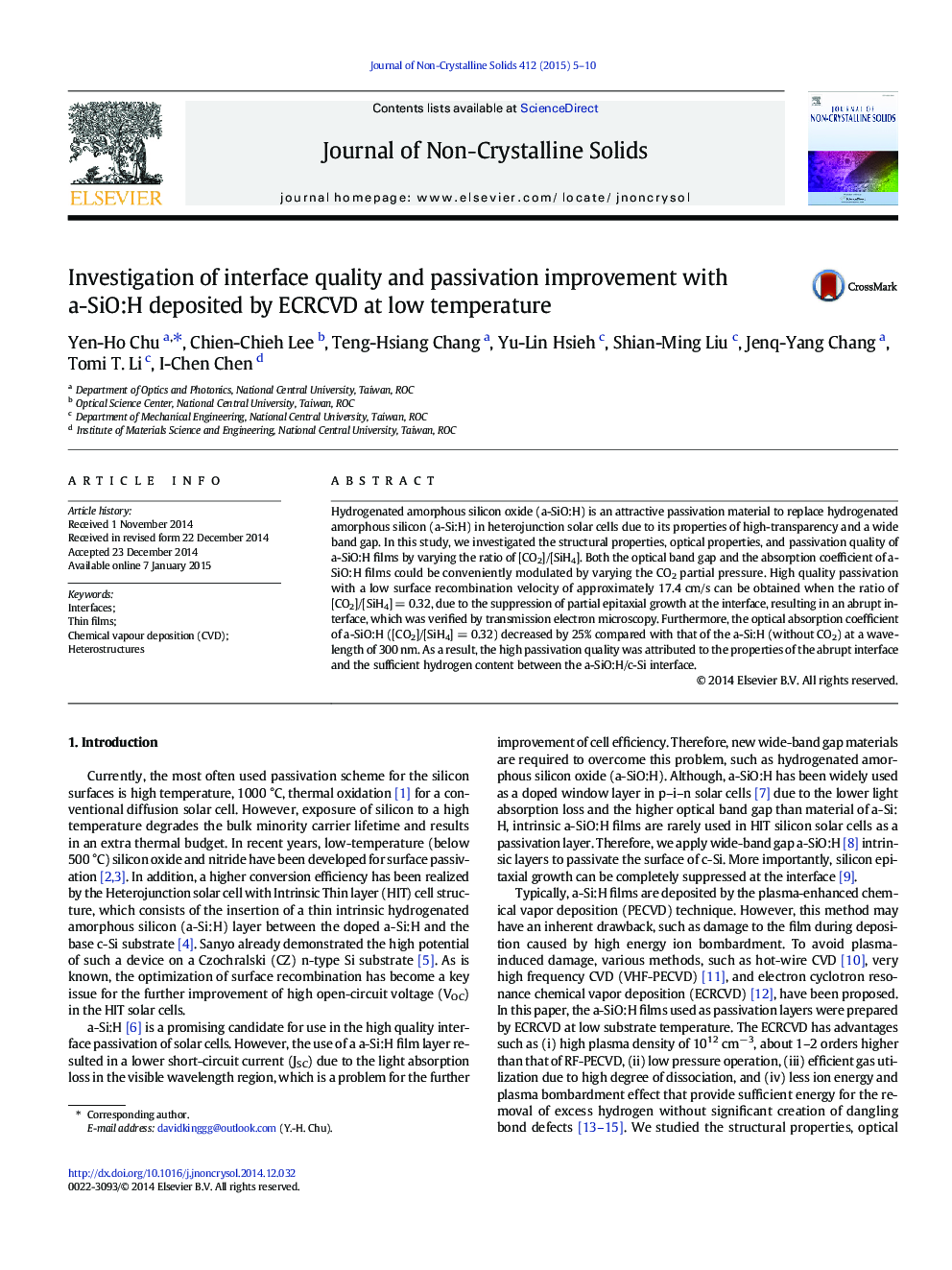| کد مقاله | کد نشریه | سال انتشار | مقاله انگلیسی | نسخه تمام متن |
|---|---|---|---|---|
| 1480827 | 1510430 | 2015 | 6 صفحه PDF | دانلود رایگان |

• Hydrogenated amorphous silicon oxide is investigated for passivation.
• A small amount of CO2 could suppress the partial epitaxy growth at interface.
• Optical band gap could be effectively modulated by varying [CO2]/[SiH4] ratio.
• Abrupt interface and hydrogen content are important for surface passivation.
• Surface recombination velocity about 17.4 cm/s was obtained.
Hydrogenated amorphous silicon oxide (a-SiO:H) is an attractive passivation material to replace hydrogenated amorphous silicon (a-Si:H) in heterojunction solar cells due to its properties of high-transparency and a wide band gap. In this study, we investigated the structural properties, optical properties, and passivation quality of a-SiO:H films by varying the ratio of [CO2]/[SiH4]. Both the optical band gap and the absorption coefficient of a-SiO:H films could be conveniently modulated by varying the CO2 partial pressure. High quality passivation with a low surface recombination velocity of approximately 17.4 cm/s can be obtained when the ratio of [CO2]/[SiH4] = 0.32, due to the suppression of partial epitaxial growth at the interface, resulting in an abrupt interface, which was verified by transmission electron microscopy. Furthermore, the optical absorption coefficient of a-SiO:H ([CO2]/[SiH4] = 0.32) decreased by 25% compared with that of the a-Si:H (without CO2) at a wavelength of 300 nm. As a result, the high passivation quality was attributed to the properties of the abrupt interface and the sufficient hydrogen content between the a-SiO:H/c-Si interface.
Journal: Journal of Non-Crystalline Solids - Volume 412, 15 March 2015, Pages 5–10